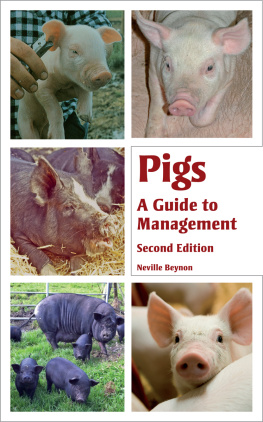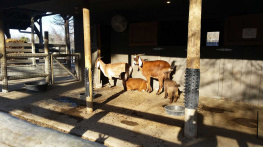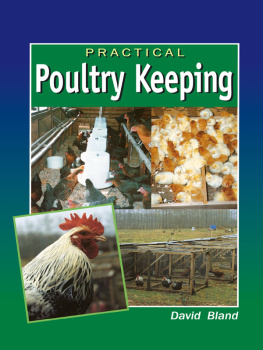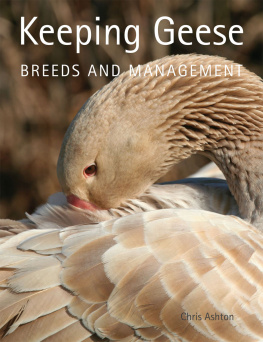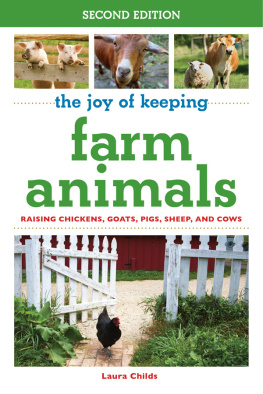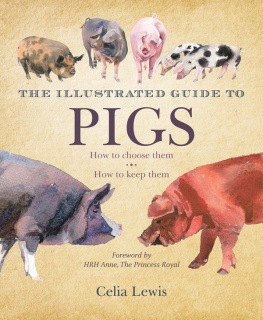Pigs
A Guide to Management
Second Edition
Neville Beynon

THE CROWOOD PRESS
First published in 1990 by
The Crowood Press Ltd
Ramsbury, Marlborough
Wiltshire SN8 2HR
www.crowood.com
This e-book first published in 2014
Revised edition 2014
Neville Beynon 1990 and 2014
All rights reserved. No part of this publication may be reproduced or transmitted in any form or by any means, electronic or mechanical, including photocopy, recording, or any information storage and retrieval system, without permission in writing from the publishers.
British Library Cataloguing-in-Publication Data
A catalogue record for this book is available from the British Library.
ISBN 978 1 84797 753 3
Illustration credits
Photographs by Neville Beynon unless otherwise stated.
Line drawings by Aileen Hanson.
Disclaimer
The author and the publisher do not accept responsibility in any manner whatsoever for any error or omission, nor any loss, injury, liability, or adverse outcome of any kind incurred as a result of the use of the information contained in this book, or reliance on it. Readers who are in doubt about any aspect of pig keeping, or the health and welfare of their pigs, should seek professional advice.
Typeset by The Manila Typesetting Company
Printed and bound in India by Replika Press Ltd.
Contents
Foreword
The principal reason for keeping pigs is to provide high quality protein foods for humans. Indeed it is forecast that global pig production needs to increase by some 25 per cent in the next twenty years to meet the demands of an expanding human population, and technologies and knowledge must be developed to meet this increasing need.
In this respect, pig production is a dynamic and ever-changing industry, which needs to take account of the many complex interactions that influence the growth and development of the animal. These include genetics, nutrition, health, welfare and the environment, as well as market requirements and public awareness. All of these are discussed in the current book written by Neville Beynon. This book is the second and updated edition of Pigs A Guide to Management, first published in 1990 and which proved very popular. Since then our knowledge of pig production has increased through many major and fascinating developments, especially in the management and production of pigs, and many of these are presented in this publication.
This book is intended for those who wish to know more about the current practices and strategies involved in keeping pigs. It is not meant for professionals, although they may find it extremely useful. It is aimed at students, those wishing to know more about pig production, and those starting out in the business, and it is written with this objective in mind. It contains a wealth of practical information covering all aspects from genetics to breeding, growth, nutrition, housing, management and welfare, and carcass and meat quality.
Neville Beynon is well qualified to write such a book since he has worked all his life with pigs, starting on the family farm in Wales and then with major companies, followed by periods in academia at Sharsholt and Berkshire Colleges of Agriculture, the latter as Head of Agriculture. Over the last twenty years he has developed his own consultancy business, N. & R. Services, advising on the management and production of pigs in the UK and abroad.
The broad spectrum of information contained within the pages of this guide provides all the basic facts relevant to the many factors influencing pig production. This will allow practical strategies to be developed to improve pig production in order to meet the needs of a rapidly expanding human population. This book should be on the bookshelf of all those interested in knowing more about pigs.
Dr William H. Close
Acknowledgements
My thanks go to all those colleagues who have provided advice and guidance to me over the years on farms, AI centres, classrooms and lecturing venues, and on numerous committees and working groups. In particular I would like to thank all those highly professional and amateur pig keepers, veterinarians, nutritionists and other specialists who have been inspirational and a source of so much knowledge and experience.
Special thanks must go to the following: Andrew Smith and his team for allowing me the privilege of taking colour photographs of sows farrowing and piglet behaviour; Lutz Steuer of Atlantic Systems and Knut Noetzel for their generous contribution of photographs; Bob Gornall of Rotech and Professor Johannes Kauffold, University of Leipzig for their contributions concerning AI and ultrasonography; Anthony Mosely and Rattlerow Farms for the professional photographs of pig breeds and hybrids; Stephen Howarth of BPEX for the tabular and graphical data; and companies such as Veyx-Pharma and BOCM PAULS, Midland Pigs and Finrone Systems Ltd, and the Danish Agricultural Council for allowing the use of photographs and data.
My apologies to all those not mentioned or given due credit, who allowed us to take photographs or provided other material included in this book.
I would also like to thank all those who have actively supported and advised me at various stages of my career: my late father Vincent Beynon; influential veterinarians John Gray, Ted Nelson and the late Dr Steven Kerekgyarto; and academic and commercial colleagues, including the late Nick Bird of Farmex, college farm staff, commercial pig keepers, smallholders and of course the students, a number of whom have now progressed to highly respected senior positions within the pig industry.
Finally, the most recent chapter in my career as a freelance consultant would not have been possible without the encouragement and active support of Dr William Close, including the updating of this book.
The Pig and its Development
Pigs have been a feature of farms in Britain since the early Neolithic period. It is highly likely that the wild pigs of Europe and their partially domesticated cousins followed our Neolithic forefathers into the first farming villages. The pigs scavenging and rooting behaviour was both a help and a hindrance to these early people, and they demanded control and management. Economic pressures and developments have influenced the way in which pigs have been managed ever since these early times.
The modern domestic pig (Sus domesticus) and its proud and potentially ferocious cousin, the wild boar (Sus scrofa), both belong to the pig family (Suidae). This curious and yet fascinating mammal developed over the past 50 million years from the same type of usually even-toed animal of the order Artiodactyla. It is now known that the pig group (Suina) sub-order had already split from the camel and ruminant sub-orders by about 46 million years ago.

